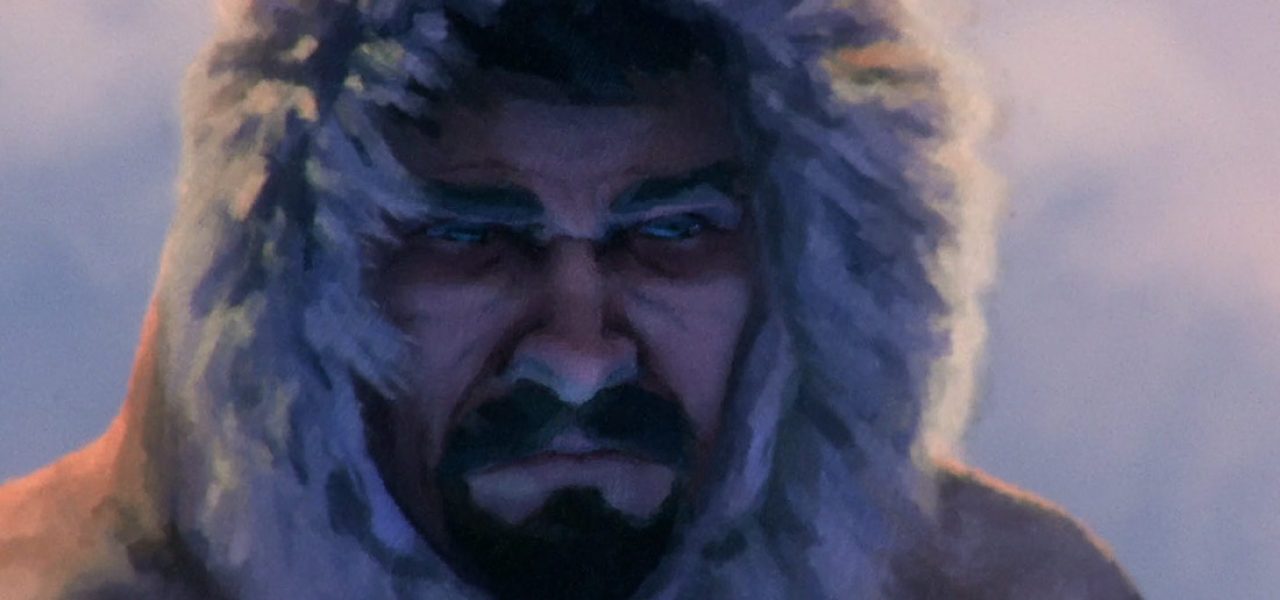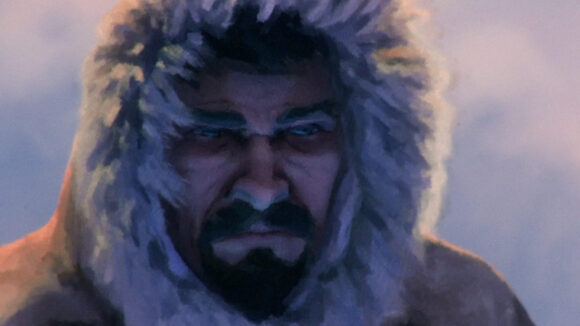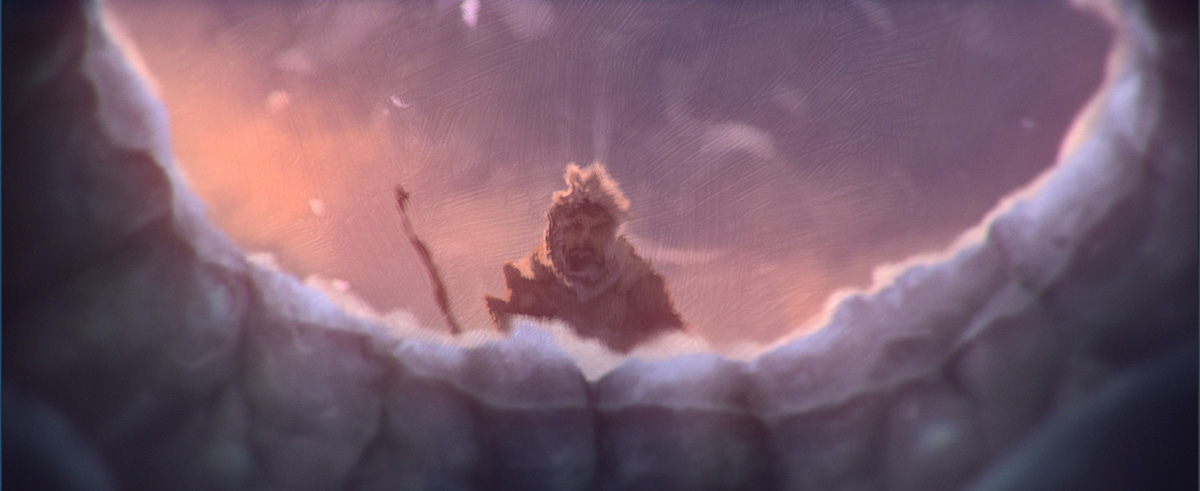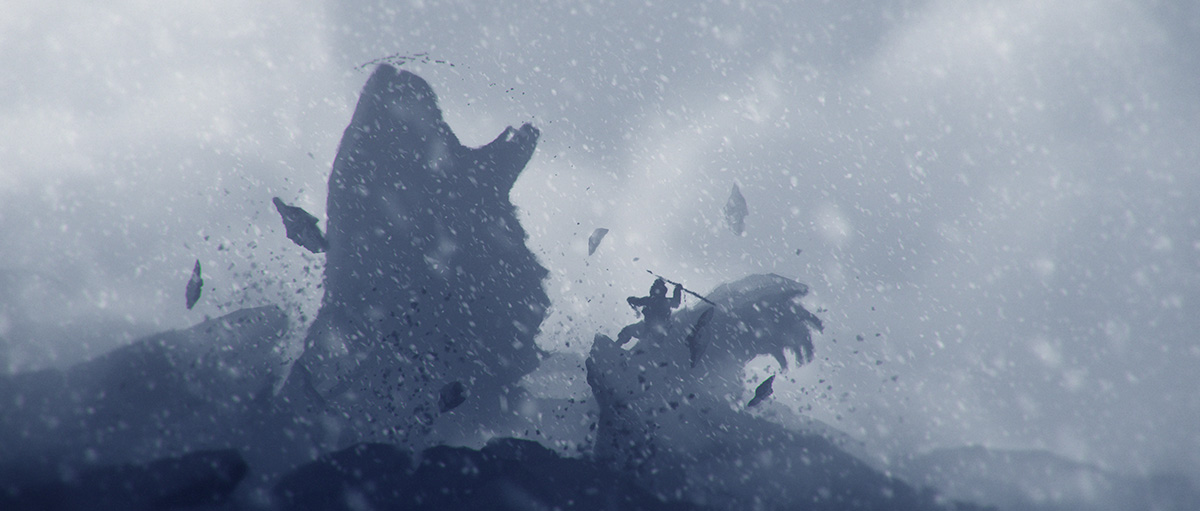

How E.d. Films Is Using Real-time To Help Make Their Animated Films
You might have heard a lot in recent times about how game engines – aka real-time rendering – can be part of animated filmmaking, especially for smaller studios with fewer resources. But this is still a relatively new side of production, and animation pipelines are still being developed and massaged to incorporate game engines.
One studio, e.d. films, in Montreal, Canada, has adopted real-time in a big way and even made its own game engine media export tool called Scene Track available for free for others to download. E.d.’s short, Giant Bear, which has a hand-crafted 2d feel but is being made with the help of 3d and real-time tools, is the result of the studio’s experimentation with new filmmaking techniques.
Cartoon Brew asked president and creative producer Emily Paige about that approach to e.d. films’ work, how Scene Track came to be, and how they’re trying to change the way real-time and other technology can help produce films that still feel hand-animated.
Paige describes e.d. films as both an animation studio and digital tools lab. The company, which Paige founded with art and tech director Daniel Gies, has been based in Montreal since 2007 and started out with short-form education and cultural projects, then how-to videos, before continuing to produce a range of animated short content. In particular, e.d. films has always had a technical bent, and they share and sell animated fixtures like brushes, rigs, props, and animated motion graphics such as snowfall templates for others to use.
In terms of game engine use, Paige says as a small studio with a limited budget, they were looking to still produce world-class animated content within constrained time and resources. “Anyone who is familiar with animation knows how expensive and labor-intensive the process is,” said Paige. “Unlike live action, where the director can try many different things on set and build the film in the editing room, there is almost no room for experimentation once animation production is set in motion.”
So e.d. looked to real-time. But they quickly found that there was no ‘record and export’ feature in any of the available game engines, which made it hard to bring in game engine data into the studio’s existing pipeline. The solution was to build their own exporter, and this became Scene Track. “We created it so we could generate data that could be converted into any format we want,” said Paige. “We chose to focus on FBX, MIDI, video, and image sequences for now, as they are the most useful for our production process.”
Scene Track was made to work with Unity as that is what e.d. films had been using. However, the studio’s plan is to eventually make the tool platform agnostic. It enables a user to record the gameplay of an animated character or asset and then be able to drag that into the animation timeline to use in a scene. “This allows you to populate a set with animation very quickly,” says Paige. “Once you are finished playing, recording, re-timing. etc., whatever you made in Unity can all be imported into your cg animation package and polished for a finished shot.”

Paige adds that e.d. films has been using Maya’s HumanIK (HIK) rigging and motion capture workflow to create rigs for humanoid characters and then applying Unity animation back over them, something she says has become a massive time saver. “You can go from a character without a rig to an animated asset in Unity, back to Maya and polishing the animation in under an hour.”
Scene Track most recently saw use on e.d. films’ short, Giant Bear. It’s an animated film that has been in the works for several years, and tells the story of the Inuit legend of the last monster bear and an Inuit hunter. Giant Bear uses 2d environments and 3d character models, with the final look having an illustrative, painterly feel, with constant movement in the images. Paige says they also explored several Unity-related tools in making the film.
“What we really wanted more than anything was organic, naturalistic movement that we could apply to the final cinematic rig in Maya,” said Paige. “One of the first things we did was getting the hunter to walk and run across long, rough stretches of land. The scenes were important in setting the mood of the film and we really didn’t want it to feel like a walk cycle. There are some really great plugins for Unity on the Unity Asset Store that are designed to automate complex animations and behaviors in real time for character rigs. We were just scratching the surface, but by using Final IK and OOTI’s character controller for Unity we were able to get the basic walk cycle responding to the terrain in a believable way in a matter of minutes. His feet would orient to the surface, his body would lean into hills, and we could use a mouse to direct his gaze as he trudged through the snow.”
With those tools, e.d. films started treating scenes almost like live action, and they would then try variations. They would introduce obstacles, change the hunter’s direction, stop and look, look lost, and even change the terrain in real-time. “At one point we had the hunter running across sheets of rising ice and jumping to the ground in just one afternoon of work,” said Paige. “Once we had captured the animation we wanted, we brought it back into Maya, discarded the character geometry and rebounded it to the cinematic rig. The animation was tweaked and refined, and then we rendered everything using Arnold.”

Effects done in post helped to achieve the painterly look, as did dropping the frame-rate of the characters’ movements. “This meant subtle actions with little movements can be as low as four frames per second, while a fast run might only be 12 to 18,” said Paige. “Ultimately this means the frame rate of a character is constantly changing. This is a rare treatment in 3d, however it is becoming more common. It was done in The Peanuts Movie and looks to be used liberally in the upcoming animated Spider-Man: Into the Spider-Verse film.”
Giant Bear is nearing completion. The 10-minute short was co-produced with Iqaluit-based Taqqut Productions and received funding from the Nunavut Film Development Corporation and National Film Board of Canada. E.d. films is currently looking for a distribution partner.

